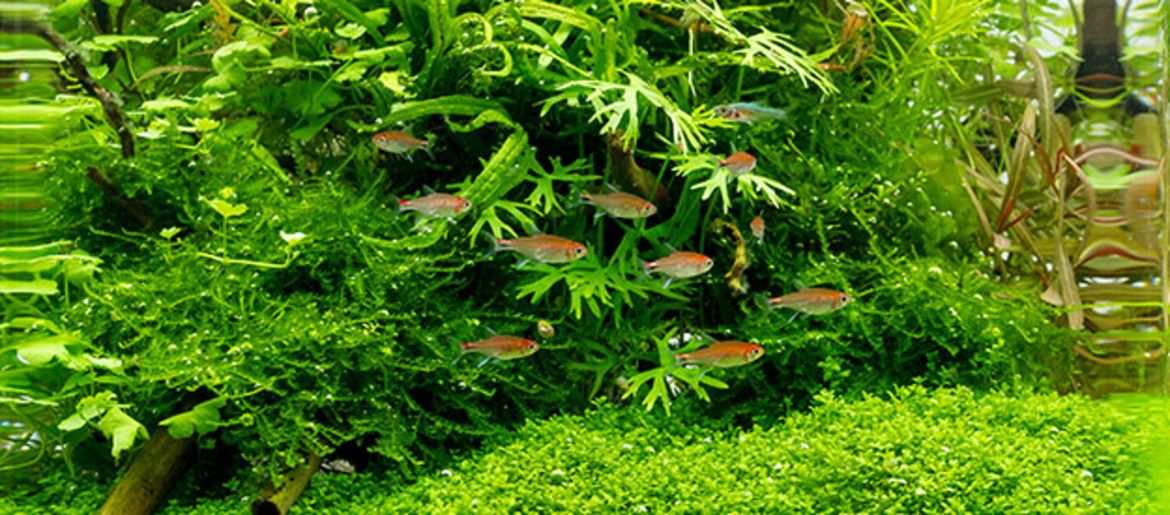Feed your ornamental fish properly
How do you feed ornamental fish?
Feed fish correctly, prevent problems in the aquarium
Fish food in the aquarium is a hugely important and quite often a highly underestimated factor - it not only serves to feed the ornamental fish, but it can also cause some problems in the aquarium if it is handled incorrectly. Quite often it happens that the direct cause of the problems with fish feed cannot be recognised at all. So many aquarists have already gritted their teeth on such things as algae plagues and do not come to the cause because they do not change the food - because they do not see the connection with the food at all.
But if you don't fix the cause, there is no sustainable solution!
Cheap flake food from any roughly chopped ingredients, bought in a 1000-gram can, which is in the cupboard for a correspondingly long time and is simply fed to all the fish in the aquarium, can cause problems: from sick fish, dying much too soon, but also from pests to algae plagues, unsuitable fish food can be the cause for a lot of unsightly things in the aquarium.
Connection with slug pests!
A very often heard tip in the groups on Facebook is, for example, that if you have too many aquarium snails, you simply have to feed a lot less - but some people feed really little and still have a snail problem. If the food does not match the needs of the fish, or if something difficult to digest has been processed in the cheap food, there is simply too much "behind" ... The fish cannot use this food properly and literally poop out the nutrients. The snails are happy because they also eat the remains of fish, at this point they are quite painless. The poor fish are starving and the snails are happy anyway. Rats! so you have fed too little in vain!
Algae pests and fish food!
The same applies to algal plagues and algal blooms. If the fish cannot get the nutrients in the feed, they come out again. From the fish droppings, they can seep into the water and not only "fertilise" the aquarium plants, but also the algae. You can then frantically add fertiliser, tap CO2 onto the aquarium and do something else - if you continue to feed the same garbage and do not consistently carry out the other measures, there will always be problems here.
Fish food and cloudy water!
Cloudy water is often due to a bacterial bloom. You can recognize this above all from the fact that the water is whitely cloudy, so not green or brown. If you are not sure whether your water has a green tint, hold a white customer card in the water just behind the window. Bacteria, like algae, need nutrients, and fish feed that is not well utilised provides them with just that. A good fish food with usable nutrients is also an insurance against cloudy water and bacterial blooms.
How do you recognise good fish food?
Good fish food is fully declared - a transparent list of all ingredients and raw materials on the label is a good start! It is important that you make sure that it does not contain cheap fillers. The presence of attractants is also not a good sign, sometimes the aromas are used to hide inferior raw materials that the fish would not eat in life. Fish meal is also not good food for all fish - very few fish are predatory fish that feed other fish, but rather omnivores that feed mainly on insects, plants and algae. Even the pure carnivores among the fish such as Bettas do not eat other fish in nature, but rather worms, insects, insect larvae and small crabs.
Hard feed vs. soft lining!
Hard food granules can even hurt a sensitive fish mouth when bitten, which can lead to fungal infections. We don't want that! Soft feed granules are therefore not only equivalent to feed animals from nature, but also actively protect the fish from consequential damage caused by unsuitable feeding.
Which food is good for my fish?
The omnivores
In the community aquarium, it is tricky to feed specifically. The good news: Most popular aquarium fish such as guppies, neons, scalars, many catfish and the like are omnivores and get along super well with a feed made from plant and animal components. The granulated food Dennerle Complete Gourmet Menu , for example, is such a balanced food with a soft consistency, just like the Complete Gourmet Flakes . No fish meal was used here, and the nutrients are so open that the fish can use them very well and therefore give less sturdy droppings.
If you want to admire more beautiful colours in your fish, you can also use the Dennerle Color Booster To fall back on. Here Dennerle simply added some astaxanthin to the main food that your fish need to develop great colours.
If you tend to look after small fish in your aquarium, it is worth taking a look at the Neon & Co. Booster from Dennerle . The finer feed granulate is aimed specifically at tetras, bearblings and barbels and also at guppies in the aquarium, which might be a little more difficult with the larger pellets of the main feed. Again, the needs of the omnivores are perfectly covered, and high-quality insects and krill cover the need for animal protein, while high-quality plant components cover the vegetarian part that these small omnivores also need.
The Guppy & Co. Booster is also aimed at omnivores. There are many natural ingredients that act like a colour booster and can provide great colours for the colourful guppies. The sensitive and now unfortunately quite susceptible guppies are supported with a mix of immune-boosting ingredients such as beta-glucan. It contains a higher proportion of plants because guppies like to eat something green in nature.
The Cookies Special Menu by Dennerle has also been designed for omnivores. These rapidly sinking food chips serve the bottom dwellers among the omnivorous aquarium fish, i.e. armoured catfish, loach, finfish and thorn eyes and many catfish. Of course, one or the other guppy will pluck the tabs, but the fact that the cookies sink quickly means that the bottom dwellers in the aquarium still get their ration.
The specialists!
But there are not only omnivores in the aquarium, there are also food specialists. Fighting fish are an example here. They are pure carnivores in nature, which do not even pluck algae in exceptional cases. Food with too high plant components causes their intestines to stick together. They can even get sick or die earlier! Frozen food and live food are a good choice for them, but if you don't have space in the freezer or don't like stinking live food crops on the window ledge, Dennerle has launched an alternative with the Betta Booster on the market. There is also a vegetable content here, but it is comparatively significantly lower than in general fish feed. Why are there plant-based food at all? Quite simply - Bettas also eat plant-based foods in nature, namely the intestinal contents of their prey animals, which mainly feed on algae and the like! The Betta Booster is also a great feed for gouramis and guramis, which is just by the way.
For carnivores, but also for omnivores, the valuable freeze-dried Calanus FD Natural by Dennerle offers a great variety. Here Dennerle has packed arctic zooplankton in cans - super aromatic and of a size suitable for all small to medium-sized aquarium fish. With the nutrient-rich natural food Calanus FD Natural, you even get wild catches.
The Dennerle Pleco Menu is aimed specifically at catfish that mainly clean algae from the panes and decorations in the aquarium and also feed other growths. This contains leaves that provide the catfish with fibre for a functioning intestine, vitamin-rich vegetables and of course algae. A small proportion of insect larvae and crustaceans mimic the proportion of animals growing up that catfish automatically take in with them in nature. The hard surface ensures that the catfish can not only vacuum clean their feed, but that they have to work properly to get something from it - just like in nature! This ensures variety and combats boredom.
Goldy Booster is a special granulate for goldfish. They need animal and vegetable ingredients about half half, and they like a little larger granules. Dennerle has naturally considered Goldy Booster. How good that the special high-quality Dennerle food is now also available for goldfish and their breeding forms such as lion's head, shubunkin and comet!
Continuing with the food specialists... Many cichlids and dwarf cichlids are not omnivores, but up-and-coming eaters (mostly vegetarians, with the occasional small crab that still sat in the algae) or the more predatory cichlids (which nevertheless absorb a certain amount of plant food via the intestines of their feed animals). With Cichlid Veggy Dennerle has set new standards in the feeding of cichlids and dwarf cichlids in the aquarium for the up-and-coming eaters and vegetarians among the cichlids and with Cichlid Carny for the carnivores.
Of course, Dennerle also pays homage to the king of aquaristics, the discus. Discuss are often quite difficult to keep because they not only have high demands on water values but are also hard to come by on artificial feed. Diskus Soft is a special soft granulate that feels like a soft insect larval body in the disc mouth and creates a great eating experience for the discs. In addition, the beautiful discus fish are also perfectly supplied with the all animal and vegetable ingredients that they need. With natural aquatic animals as protein suppliers - no mammals were processed here, which is absolutely important for the health of the discus. Classic cattle heart feeding is now very controversial.
We at Olibetta are very proud that we were able to win Dennerle as a partner for our online shop with its high-quality fish feed series. You only buy the best fish feed from us, which not only avoids polluting your fish and also the entire biosystem in your aquarium but can actively improve it.
We hope you enjoy your new aquarium!
Chris Luckhaup
Latest reviews
-
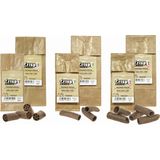 4.6 (19)
4.6 (19)Garnelenhaus GlasGarten Crispy Caves - Edible Caves, M, 6 pcs.
- Made of wood fibres, clay and leaves
- 100% natural ingredients, does not pollute water
- Offers hiding places
€ 11,99 (€ 2,00 / Pc)Delivery by December 10
-
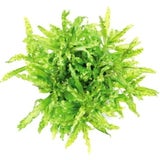 € 6,99
€ 6,99Delivery by December 10
-
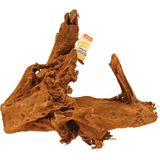 4.6 (25)
4.6 (25)Amtra Mangrove Wood, 35 - 45 cm
- Beautifully shaped aquarium decoration made of real wood
- For your freshwater aquarium and terrarium
- Provides fiber for invertebrates and catfish
€ 13,99Delivery by December 10
-
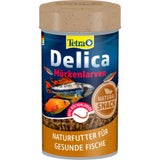 4.4 (15)
4.4 (15)Tetra Delica Mosquito Larvae, 100 ml
- A natural delicacy for all tropical ornamental fish
- Red mosquito larvae: high acceptance and natural protein source to promote growth
- The perfect addition to the Tetra staple food
€ 5,99 (€ 59,90 / l)Delivery by December 10
